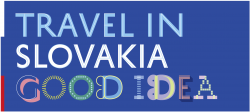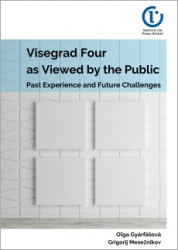This is the archival site of the former V4 portal. As of July 2024, it is no longer updated.
Visit visegrad.group for the current website.
Visit visegrad.group for the current website.

Thu 8 January 2026
Warszawa (PL)
4/2°C
| Tue | Wed | Thu | Fri | Sat |
|---|---|---|---|---|
| 1 | 3 | 5 | 6 | 8 |
Thu 8 January 2026
Praha (CZ)
6/2°C
| Tue | Wed | Thu | Fri | Sat |
|---|---|---|---|---|
| 6 | 5 | 8 | 8 | 9 |
Thu 8 January 2026
Bratislava (SK)
6/-1°C
| Tue | Wed | Thu | Fri | Sat |
|---|---|---|---|---|
| 8 | 6 | 7 | 8 | 8 |
Thu 8 January 2026
Budapest (HU)
5/-2°C
| Tue | Wed | Thu | Fri | Sat |
|---|---|---|---|---|
| 6 | 6 | 6 | 9 | 8 |
Kiss-Szemán, Róbert: "Homo Visegradicus"
When the archaeologists of the distant future draw a cultural map of the atomic age, there will no doubt be a region on the map of Europe they will either call "Middle Europe" or "Central Europe." Either way, it will be a colourful spot, given that in the course of the 19th and 20th centuries this area in the center of Europe was most notable for its fragmentation and diversity. This cultural and geographical area was created (they will say) by the friction and collision of Europe's two great tectonic plates, that to the East and that to the West, and many languages and nationalities contributed to its diversity (Polish, Slovak, Czech, Roma, Hungarian, etc.). This linguistic and ethnic variety was made even more colorful by numerous religions and cultural customs (Catholic, Jewish, Reformed Church, Evangelical, etc.), not to mention the multitude of important historical influences that were felt here. No one will be able to protest, then, if in the future this cultural region is referred to as a "Central European mosaic".
For the historians of the future, the facts will clearly show that the peoples in this small area fought bloody battles against each other around the time of the atomic age. They attacked each other both with and without external assistance, destroyed and disbanded state organizations, took goods and redistributed them, and took and regained territories from each other. Nor were their ceasefires much quieter, as in the peacetimes between wars they organized reprisals against each other: The Hungarians Hungarianized, the Slovaks Slovakified, the Czechs Czechified and, together with the Poles, de-Germanized, etc.
For the historians of the future, the facts will clearly show that the peoples in this small area fought bloody battles against each other around the time of the atomic age. They attacked each other both with and without external assistance, destroyed and disbanded state organizations, took goods and redistributed them, and took and regained territories from each other. Nor were their ceasefires much quieter, as in the peacetimes between wars they organized reprisals against each other: The Hungarians Hungarianized, the Slovaks Slovakified, the Czechs Czechified and, together with the Poles, de-Germanized, etc.
The "age of isms" will occupy a separate chapter in textbooks on the Central European mosaic: They will mention Austrianism, Dualism and Trialism, capitalism and socialism, Nazism, anti-Semitism and Communism. These "isms" all provided ideal excuses and opportunities for those in power to limit the multicolored Central European mosaic to a single colour, such as black or red, thereby crippling people accustomed to diversity. The "age of isms" will in due course come to mean the era of terror and fear, and when archaeologists find the Monument to the Victims of Communism on the side of the Prague Castle, and reconstruct the House of Terror in Budapest, or confront the fact that Popieluszko, admired as a Polish martyr, also lived at the time of Central European "isms", the hairs on the back of their necks will stand up in fear.
The historians of the future will scratch their heads in disbelief at the length of time it took for Central European people to start cooperating. How long they believed they could rid themselves of the burden of communism on their own, giving it a try every twelve years! First came the hotter-blooded Hungarians in 1956, then the Czechs and Slovaks together in 1968, and another dozen years later the Poles in 1980. It is no great surprise that they did not succeed. Yet the leading figures always observed their counterparts in the other countries, learned each other's languages, respected each other's cultures, and recognized each other's national interests. Lajos Kossuth, an exile following the Hungarian Revolution of 1848-49, created a plan for a Danube confederation, while Pope John Paul II used every means at the Catholic Church's disposal to free its peoples from foreign occupation. The colourful tapestry of Central European folk music has also inspired the timeless works of such musical greats as Fryderyk Chopin, Leoš Janáček or Béla Bartók.
The researchers of the distant future will observe a significant change in the quality of the Central European mosaic at the beginning of the 21st century: Two centuries of disintegration being replaced by rapprochement, and political and cultural cooperation between the people of Central Europe taking the place of strife. In parallel with this phenomenon, the various peoples of Central Europe underwent a process of self-awareness and self-criticism. The Hungarians, for example, recognized the ways in which their historical dominance made them both overand underestimate themselves, and began to see their historical role in the region in a more realistic fashion. The Czechs put aside their tendency to side with the greatest power, which had always put them at the mercy of other, more powerful nations. The Poles became aware of their complexes arising from their fears of losing their statehood and nationhood, and renounced their dream of becoming the medium power in the region, while the Slovaks, as the smallest and youngest nation of the four, came to terms with their inferiority complex.
The Central European peoples also became capable of learning from one another. What could be learned from each, and integrated into what was common? From the Hungarians, the explosiveness of their 100-metre runners and their generous hospitality. From the Czechs, the capacity to take good care of material wealth, and their tactical foresight. From the Slovaks, their natural freshness and inventiveness, and their capacity to achieve victory from an originally disadvantaged situation. From the Poles, ingenuity and cultural elegance, accompanied by a solid religious conviction. All obstructions to the birth of the Central European were removed during this period, the future archaeologists will see, with the birth greatly aided by the best Slovak, Hungarian, Polish and Czech statesmen and artists.
Ecce homo visegradicus!
Ecce homo visegradicus!
Here is the Visegrad man, explosive but generous with his hospitality, cautious and careful but fresh and capable of winning, because he looks to the future in an ingenious and optimistic fashion. Who would not want to belong to this breed? Let's all cheer him on, that he might settle this Visegrad land as soon as possible. There is but one danger he faces: The danger of "isms", which could distort the Visegrad idea into "Visegradism"...
Róbert Kiss Szemán
Hungarian historian of literature, essayist. Director of the Hungarian Culture Center in Prague (2000-2005). Currently professor of Slavic studies at the University of Budapest.







